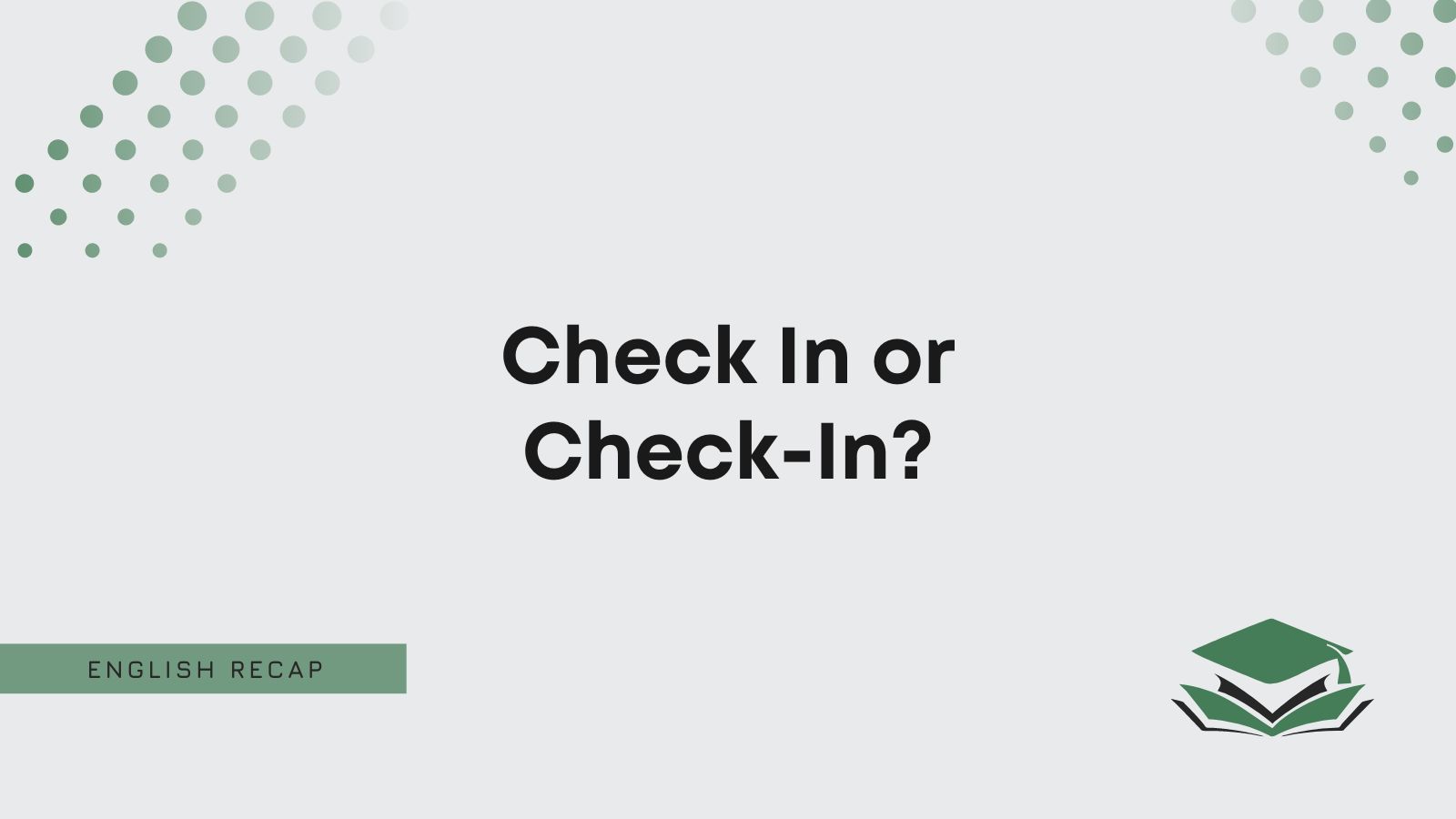The hyphenated word check-in can be a noun or adjective. E.g., “We asked at the check-in desk for a refund.” Furthermore, check in as two words is a verb phrase. E.g., “We need to check in two hours before the flight.”
The hyphenated one-word version check-in can be two different word forms. First, it can be an adjective that describes a noun.
As shown in this example:
- The check-in meeting at work lasted all morning.
Alternatively, check-in can refer to the place where you check in. In these cases, check-in is essentially short for a longer phrase, such as check-in desk or area. However, in modern English, the compound noun check-in refers to any place where people can check in.
- The check-in was fast for our flight because we did it online.
Furthermore, the two-word phrasal verb check in does not require a hyphen, and because it is a verb, it can change tense.
- We checked in at 9 am this morning.
In formal writing that follows the rules of AP Style, you should use the above grammar rules concerning the hyphen.
Furthermore, the rules and usage are exactly the same in the UK and the US.
Are you interested in seeing some more examples? Then please keep reading the rest of the page to learn more about the different forms of check in and when you should use each.
Check In
The two-word term check in is a phrasal verb that refers to the process of registering or completing something. You will often use it when saying that you are checking in to a hotel or flight.
When you use the phrasal verb form of check in, you should never put a hyphen. Also, because it is a phrasal verb, it can appear in any verb tense.
- We couldn’t check in to the hotel because they lost our reservation.
- We were checking in to the hotel when someone stole our luggage.
- We have already checked in for the flight.
Observing the tense is often a good way of knowing whether you need a hyphen or not. I.e., if it is not in the simple present, you should never put a hyphen.
Check-In
The hyphenated word check-in can be two types of word.
Firstly, it is an adjective you use before a noun.
- The check-in staff were extremely rude.
Alternatively, it is a noun that refers to the place or area where the check-in occurs or to the process of checking in.
- We got to the check-in thirty minutes late, so we missed the flight.
Checkin
The word checkin without a hyphen or space is incorrect, and you should never write the term in this way.
There are two ways to write the term correctly, depending on your required word type.
The following examples show the three different word types in context:
- Correct: He did not have his passport, so he couldn’t check in. (phrasal verb)
- Incorrect: He did not have his passport, so he couldn’t checkin. (phrasal verb)
- Correct: The check-in worker rejected him because he didn’t have a passport. (adjective)
- Incorrect: The checkin worker rejected him because he didn’t have a passport. (adjective)
- Correct: He didn’t make it to the check-in on time for his flight. (noun)
- Incorrect: He didn’t make it to the checkin on time for his flight. (noun)

